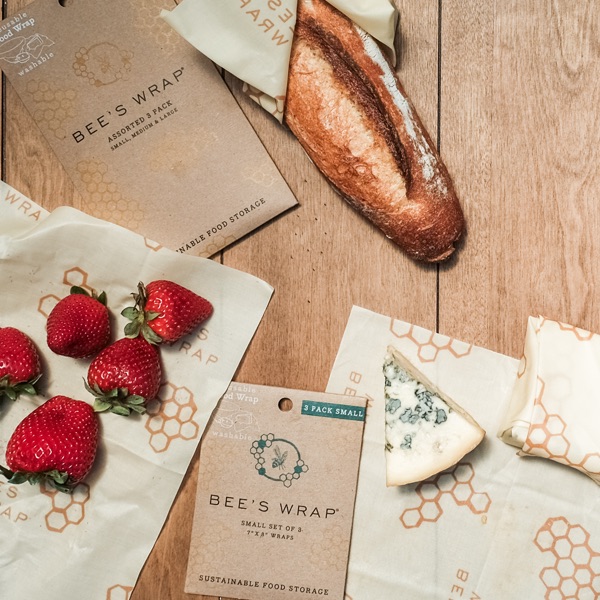There’s no denying that plastic wrap has been a convenient product in most households for many years. However, as most waste disposal companies will tell you, its convenience is only for you – not the environment. It stops your sandwiches from going stale, but it also takes centuries to break down. Your one sandwich wrapper could be responsible for killing a myriad of animals while it sits there waiting to lose its structural integrity. Fortunately, there is a better way.
Read on to discover many eco-friendly wrapping and packaging materials that could end up being better for the environment. Thanks to modern delivery services like healthy food delivery in Miami Dade we’re able to get meals wrapped in sustainable packages.
1. Glass Containers
One of the many reasons why people want to make the switch from plastic is because it can take centuries to break down. However, so does glass, so why use it? Unlike plastic which tends to lean toward being a single-use product, glass is something you can have forever. It’s one of the longest-lasting materials and will prove to offer no end of convenience.
In most cases, you can use glass containers in your fridge, freezer, microwave, and even oven. You couldn’t do that with most plastic products. Glass containers are also an excellent alternative for plastic in almost every way. You can put your unwrapped sandwiches in them and seal the lid shut. You can also put leftover dinner into them for reheating later.
Glass containers are even something you can take to the grocery store. Instead of a supermarket filling a plastic container with their deli items or bulk groceries, you can fill your glass jars. One product can end up having many uses, saving thousands of plastic wrap rolls and containers from requiring waste disposal.
2. Mason Jars
Mason jars have been around since the 1850s, but it’s only in recent years there has been a resurgence in their use. As consumers come to realize that plastic is not environmentally-friendly, they are starting to use sealable mason jars that serve a whole variety of purposes. Cafes are using them for beverages, and you can even use them for serving at home. What’s more, there’s nothing wrong with using them for produce, soup, grains, and more. Move aside plastic; there’s a new player in town.
3. Parchment Paper
If you are trying to minimize how much rubbish you send away to catering bins, then consider swapping your cling film for parchment paper. Wax or parchment paper is an excellent alternative, while also breaking down far quicker than plastic wrap. It will still keep your sandwiches fresh, but with a much less detrimental impact on the environment.
4. Bees Wrap
Bees wrap is a relatively new product to hit the market, but it’s already making waves. It consists of cotton muslin cloth dipped in beeswax, tree resin, and jojoba oil. When you heat them with your hands, you’re able to seal food within. Both the jojoba oil and beeswax are also antibacterial which can offer exceptional benefits with preservation.
When you have eaten your sandwich, you don’t need to worry about impacting waste disposal. You can clean the wraps and reuse them.
5. Cardboard
Many countries around the world have banned single-use plastic bags, with New Zealand the latest nation to join the movement. It will only be a matter of time before waste disposal businesses notice the dramatic impact in plastic waste. That’s a good thing – but how will people package their goods, or carry their groceries? Cardboard is about to become far more popular than it is now.
Instead of packaging your items in plastic, you can store them neatly in cardboard boxes. They break down into the environment, are effortless to stack, and you can use them more than once.
6. Go Nude
For the sake of waste disposal, why not consider going nude? We don’t mean take all your clothes off, but why not avoid packaging altogether? Grocery stores are not making this process easy with the number of plastic-wrapped items they have, but you can be more conscientious about the purchasing decisions you make.
Put your vegetables and fruit in cloth bags and your loose bulk bin items into glass jars. Instead of buying pasta, rice, and other ingredients in plastic packets, buy them from bulk stores that encourage you to bring containers to put them in. If you can’t seem to avoid plastic, then draw up a meal plan that differs from what you usually do. You can then make an effort to eat food that will not arrive in packaging.
Conclusion
People used to cope without plastic for packaging and wrapping, and they can do so again. Think of the effects of waste disposal and how you can stop your contribution to the growing problem. Use glass jars and containers, buy ingredients in bulk, and stop using plastic wrap for your sandwiches. These might seem like small changes, but when 7.7 billion people follow suit, we can make a significant difference.


























